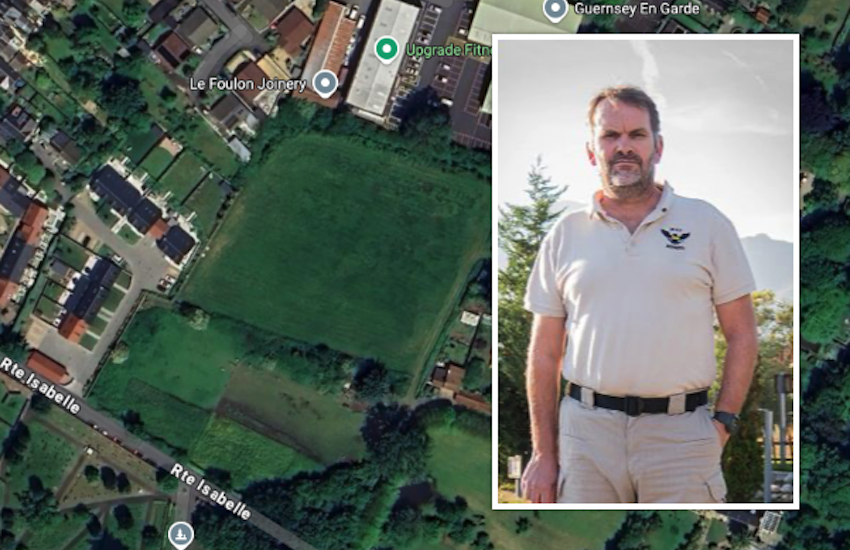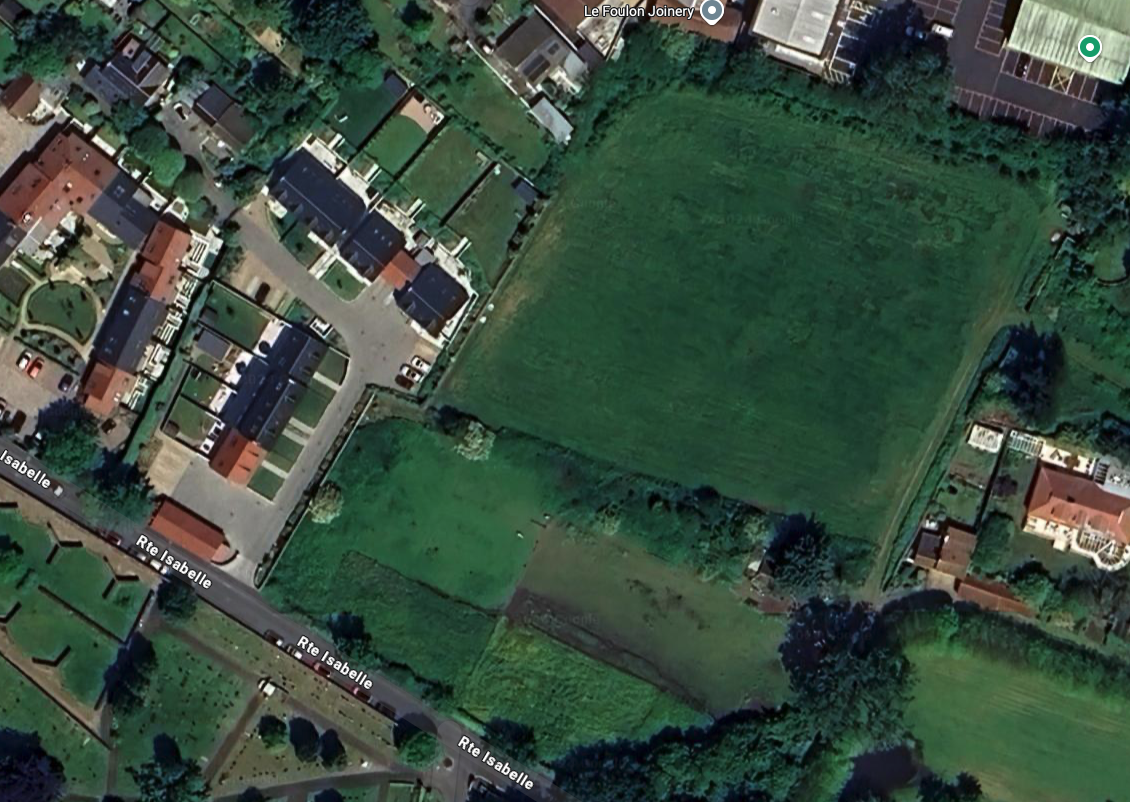


A bomb disposal expert has reiterated that he is "100% confident" unexploded World War 2 ordnance are buried in fields at Route Isabelle.
Ben Remfrey has won plaudits for his work clearing mines and bombs, including most recently receiving an award from the Ukrainian military for his services there since the Russian invasion.
He shocked some members of the public when he shared his concerns over the likelihood of the undetected bombs last week - prompting Guernsey Police to issue a statement in response.
While they have said "there is no strong evidence that these devices exist", Mr Remfrey insists the evidence is clear.
"...they commissioned a shallow non-intrusive survey that was never going to find deeper buried bombs," he said.
"The report from 1941 clearly outlines the bomb funnels (hole) were 26ft deep. And therefore a deep intrusive survey would only find these bombs. Not a shallow survey down to a maximum of 9 feet. How would that find a bomb at 26 feet? This is the issue.
"Home Affairs never had any intention of locating these three bombs. Or they would have read the report of 1941 and had they even the slightest intention, realised a shallow non-intrusive survey would not find these bombs."
The "shallow-non intrusive survey" that Mr Remfrey references was carried out in 2019, after he had initially raised the concern that the bombs are lying in undeveloped fields opposite Le Foulon Cemetery.
Historic letters from 1941 had been discovered highlighting the area where the bombs had landed when they were dropped during the Occupation.
Guernsey Police said they - working with the States' Emergency Planning Team, and Home Affairs - checked the fields in question after being alerted to the possibility of bombs lying there in 2018. When that work was carried out in 2019, it found no evidence of any World War Two ordnance.
The specialists who did that work - described as a "non-invasive survey of the land the bombs were alleged to have landed in" - said that this "did not rule out the existence of the ordnance". It was also said that "a second survey could be carried out, (but) as long as there was no development in the area there was no requirement to carry out deeper investigations".
Since then, two housing developments have been completed adjacent to the field, and people have moved in.
The field the bombs are believed to be lying in is not within a development zone but Mr Remfrey says that doesn't change the risk to people already living in the areas nearby.
"An intrusive deep search survey needs to happen," he said.
"Home Affairs are negligent and putting peoples lives at risk. Why? Well there are numerous reasons in my view."

Pictured: The three bombs are believed to be buried in this field on Route Isabelle - between the Rohais, and the Foulon Cemetery.
Mr Remfrey's concerns were heightened recently after World War 2 ordnance was detonated at a Japanese Airport.
He has also cited other examples of bombs lying undetected for eight decades being detonated in recent years.
He says that if an "intrusive deep search" is carried out correctly it will not pose any risk of detonating the bombs but it could allow them to be located and dealt with safely.
Otherwise, he fears the risk to members of the public is not being taken seriously.
"There is therefore a persistent threat to life if not dealt with," he said. "Spontaneous detonation of large air dropped bombs from WW2 is a regular occurrence even after 80 years."
With residents of Route Isabelle contacting Express with their concerns since the bomb's locations were publicly queried, Mr Remfrey says they should direct their questions to Home Affairs instead.
"The States of Guernsey's Home Affairs department are responsible. They have known about the bombs in the Route Isabelle area since March 1941."
Mr Remfrey says there could be up to three bombs buried in fields along Route Isabelle and each of them could weigh up to 1000lbs.
Four were dropped on Guernsey on 3 March, 1941 as the Royal Airforce targeted the German Naval Headquarters, on St Jacques in St Peter Port.
Each of the bombs missed their intended target and landed along Route Isabelle instead. One is known to have detonated on landing, while a witness of the day said the other three landed on softer ground and penetrated the earth without detonating.
In his expert opinion, Mr Remfrey has publicly stated that the bombs are likely to be 'British GP 500lb' or '1000lb'. He said that the explosive charge weight of a bomb of this size would be around 33% of its weight.

Pictured: An unexploded 900lb bomb being dealt with at Bluebell words in 2013. The above images were taken by Guernsey Police after officers chanced upon the long-dormant WWII mine during a training exercise.
He has given examples of similar sized ordnance detonating in other locations in recent years - including in Germany where the British Army would have dropped bombs similar to ones thought to have been used here.
Mr Remfrey said that the Occupation police force, and the German Occupying Forces were aware of these bombs as a map dated 1941 had the entry locations for the three unexploded bombs and the one that detonated marked.
Mr Remfrey has also seen a letter from the States Engineer, dated 15 March 1941 which stated: "The bomb furthest from Route Isabelle struck rock and detonated, the other two bombs closer to Route Isabelle left clean cut funnels, one suspected to be 26ft deep, the diameter of the funnel being 22 inches. The Germans put explosive charges in to close up the holes.
"The third of the unexploded bombs, which fell closest to Route Isabelle fell into water logged ground so that the sides of the entry hole collapsed and the hole filled in with water and earth."
Mr Remfry has also stated that an unqualified German Officer claimed that the bombs would not pose a danger of exploding in the future and it would be safe to use the ground for building.
He believes that recent developments in the area may have rested on this "ill-advised comment" made by a German Officer stationed here during times of conflict, without any documented knowledge of ordnance.
Bomb fears over Route Isabelle fields
Comments
Comments on this story express the views of the commentator only, not Bailiwick Publishing. We are unable to guarantee the accuracy of any of those comments.